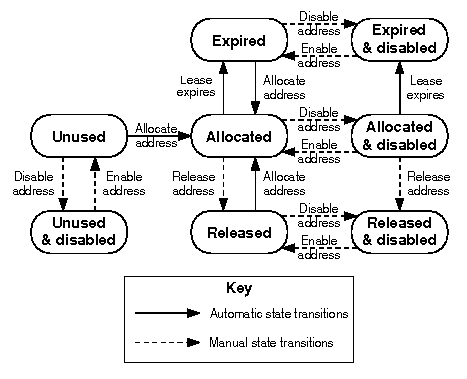
|
|
The Address Allocation Server maintains pools of IP addresses and responds to requests from other services, such as DHCP, for an address from a specific pool. A request can specify a single address, a range of addresses or a preferred address. Requesters can also specify that a client receive its previous address. If the request does not specify any address, the AAS allocates the least recently used address from the address pool.
Before responding to the address request, the AAS reserves the address for the duration specified by the requesting service. The AAS will not reallocate the address until the requesting service informs it that it has released or expired the address. The AAS will renew the lease if the same service requests the same address before the original lease expires.
The AAS can be used by services on the same host or by services running on other hosts. Local requests are made over a UNIX domain socket which is secured by permissions. The address server provides password authentication for services requesting address allocation service over a TCP connection.
You configure the address server with the Address Allocation Manager. This graphical utility allows you to set server parameters and define address pools. For more information, see ``The Address Allocation Manager interface''.
The Address Allocation Manager also allows you to query the current allocation of an address pool or a range of addresses. You can also immediately release an address from its lease or disable an address, preventing the address from being allocated or renewed if it is presently allocated. ``Address state transitions in the Address Allocation Server'' shows the state transition diagram for addresses that are maintained by the Address Allocation Server.

Address state transitions in the Address Allocation Server
Transitions shown by solid lines are performed automatically by the Address Allocation Server: making addresses expire at the end of their leases, and allocating unused addresses for use.
Transitions shown by dashed lines are changes that you can make using the Address Allocation Manager: disabling and re-enabling addresses, and releasing addresses for use before their leases have expired. See ``Administering the Address Allocation Server'' for more information on how to perform these tasks.